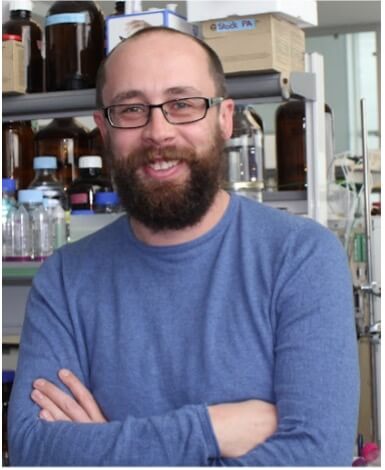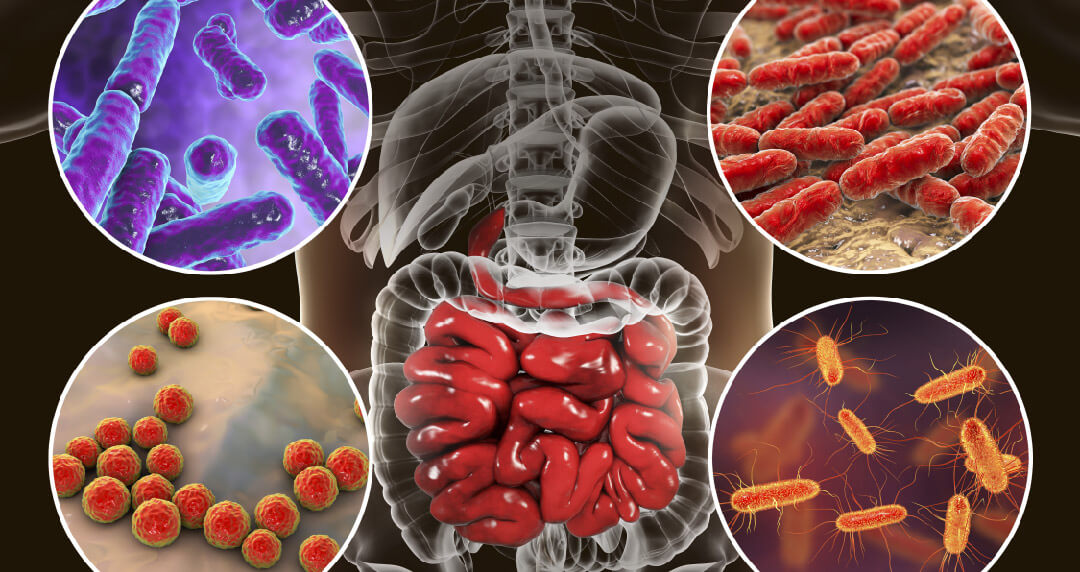<< Back to MOTIFvations Blog Home Page
Stem Cell Exhaustion: How Metabolism and Epigenetics Impact Stem Cell Aging

October 1, 2021
Table of Contents:
Introduction
While each passing day may leave you feeling increasingly exhausted, don't feel alone! Tissue-specific stem cells also undergo a process known as "exhaustion" during normal aging, which can manifest as an alteration in their differentiation ability and overall function. Of note, associated age-related defects in the formation of bone and cartilage tissues by bone marrow mesenchymal stem cells (MSCs) can leave older individuals with a higher risk of suffering from bone-related disorders such as osteoporosis (Kim et al. and Zhou et al.).
To decipher the mechanisms linking aging and stem cell exhaustion, researchers led by Peter Tessarz from the Max Planck Institute for Biology of Ageing and Cologne Excellence Cluster on Stress Responses in Ageing-Associated Diseases (Cologne, Germany) explored the intertwined pathways of metabolism and epigenetics (Reid et al. and Etchegaray & Mostoslavsky). In this entangled scientific tale, cell metabolites function as cofactors/substrates for the chromatin-modifying enzymes that control the state of the epigenetic landscape. For example, levels of acetyl-CoA (acetyl coenzyme A) influence the activity of the histone acetyltransferases (HATs) that catalyze the addition of acetyl groups to lysine residues, a crucial modification that helps to create an "open" epigenetic profile at gene regulatory regions to promote transcription.
Mesenchymal Stem Cells as a Model for Epigenetic Indicators of Aging
As reported in their fascinating Nature Aging study, Pouikli et al. now describe how the relocalization of a vital metabolite induces epigenetic alterations that impact the expression of genes associated with bone formation (osteogenesis) to prompt signs of stem cell exhaustion in aged MSCs.
The authors first employed RNA-sequencing to demonstrate that both young and aged MSCs isolated from bone-forming regions in mice expressed mesenchymal markers genes and possessed trilineage differentiation potential; however, alterations to the transcriptional profile of aged MSCs associated with decreased proliferation and a significant defect in osteogenesis both in vitro and in vivo, where older mice exhibited lower bone quality.
A subsequent assessment of global chromatin accessibility via assay for transposase-accessible chromatin using sequencing (ATAC-seq) revealed an age-related decrease at the promoters of genes related to mesenchymal cell differentiation, signaling, and cell-matrix adhesion processes, suggesting a reduction in their expression. Decreased accessibility occurred alongside a decrease in total histone H3 and histone H4 acetylation in aged MSCs, while CUT&RUN-sequencing revealed an age-related reduction in H3K27 acetylation at enhancer regions (reducing their activity) for genes associated with MSC function, particularly those related to chondrocyte differentiation (cartilage forming cells) and skeletal system development. Further analysis of ATAC-seq results indicated that age-related epigenetic alterations correlated with the increased activity of the CTCF chromatin architecture regulator and decreased activity of the E2F5 and DLX5 transcription factors, which participate in cell proliferation and osteogenesis. Overall, these findings suggested that both global and lineage-specific epigenetic alterations accompany aging in MSCs and induce the in vitro and in vivo signs of stem cell exhaustion.
Acetyl-CoA Levels and Histone Acetylation
As levels of the two main HATs (CBP and GCN5) failed to display an age-related decline in MSCs, the authors focused instead on acetyl-CoA, as the availability of this metabolite controls histone acetylation (Wellen et al. and Cai et al.). Interestingly, they discovered an increase in overall acetyl-CoA levels in aged MSCs, a somewhat puzzling finding given the observed decrease in histone acetylation during stem cell exhaustion. Instead, reduced histone acetylation occurred due to acetyl-CoA's relocalization from the nucleus to the mitochondria in aged MSCs thanks to a decrease in the levels of mitochondrial citrate carrier (CiC), a protein that exports acetyl-CoA from the mitochondria in the form of citrate (Gnoni et al.). Reduced CiC levels occurred due to lysosomal degradation, which may arise through the delivery of CiC to the lysosomes by mitochondrially-derived vesicles, perhaps as part of the mitochondrial oxidative stress response to aging (Hill and Van Remmen).
Can Acetyl-CoA be Restored to Support Bone Formation?
The study next aimed to apply the knowledge garnered regarding the link between metabolic and epigenetic pathways to reverse age-related stem cell exhaustion. Excitingly, restoring cytosolic acetyl-CoA levels in aged MSCs through exogenous CiC expression or sodium acetate supplementation rescued the reduction in histone acetylation both globally and at osteogenesis-related gene promoters/enhancers and restored a youthful differentiation potential, as evidenced by the efficient differentiation of MSCs into osteoblasts. Therefore, could a simple alteration to intracellular metabolites support bone formation by aged MSCs in humans?
Encouragingly, the authors provided evidence for the conservation of the described "CiC-histone acetylation axis" in human MSCs isolated during surgical procedures. They observed a decrease in CiC and cytosolic acetyl-CoA levels in older osteoporosis patients compared to younger, healthy individuals, faithfully mirroring their findings in mice. Therefore, it seems likely that human MSCs also undergo exhaustion and suffer from age-related deficits in osteogenic differentiation thanks to reduced histone acetylation and accessibility at the regulatory regions of crucial genes.
Summary
Overall, the results of this fascinating stem cell exhaustion study establish an age-dependent connection between mitochondrial metabolism, epigenetic profiles, and stem cell differentiation potential linked by CiC. Furthermore, the authors demonstrate that altering the levels of metabolites may have the capacity to turn back the clock on the aged epigenome to support stem cell rejuvenation and preserve cell/tissue function.
"Sodium acetate is also available as a food additive; however, it is not advisable to use it in this form against osteoporosis, as our observed effect is very specific to certain cells. However, there are already first experiences with stem cell therapies for osteoporosis. Such a treatment with acetate could also work in such a case. However, we still need to investigate in more detail the effects on the whole organism in order to exclude possible risks and side effects," explained Peter Tessarz.
For more details on how metabolism influences histone acetylation during aging to induce stem cell exhaustion and how this knowledge may help combat the aging process, see Nature Aging, September 2021.
About the author

Stuart P. Atkinson, Ph.D.
Stuart was born and grew up in the idyllic town of Lanark (Scotland). He later studied biochemistry at the University of Strathclyde in Glasgow (Scotland) before gaining his Ph.D. in medical oncology; his thesis described the epigenetic regulation of the telomerase gene promoters in cancer cells. Following Post-doctoral stays in Newcastle (England) and Valencia (Spain) where his varied research aims included the exploration of epigenetics in embryonic and induced pluripotent stem cells, Stuart moved into project management and scientific writing/editing where his current interests include polymer chemistry, cancer research, regenerative medicine, and epigenetics. While not glued to his laptop, Stuart enjoys exploring the Spanish mountains and coastlines (and everywhere in between) and the food and drink that it provides!
Contact Stuart on Twitter with any questions
Related Articles
Alzheimer’s Disease: The Impact of Gut Bacteria and Hippocampal DNA Methylation
September 14, 2021
In a fascinating new article, researchers from the laboratory of Jacob Raber from the Oregon Health & Science University (Portland, OR, USA) have moved one step closer to an understanding of how complex factors such as the gut’s microbial flora and epigenetic modifications in the brain can impact behavior and cognition in a mouse model of Alzheimer's disease.
Read More
Can You Really Reverse Your Epigenetic Age?
October 1, 2019
A recent report in the field of epigenetics claimed that humans could reverse their epigenetic clock. This research led to both excitement that we might be able to take steps to live longer and healthier lives and skepticism that the results might not be real. This article covers all the details.
Read More
<< Back to MOTIFvations Blog Home Page








